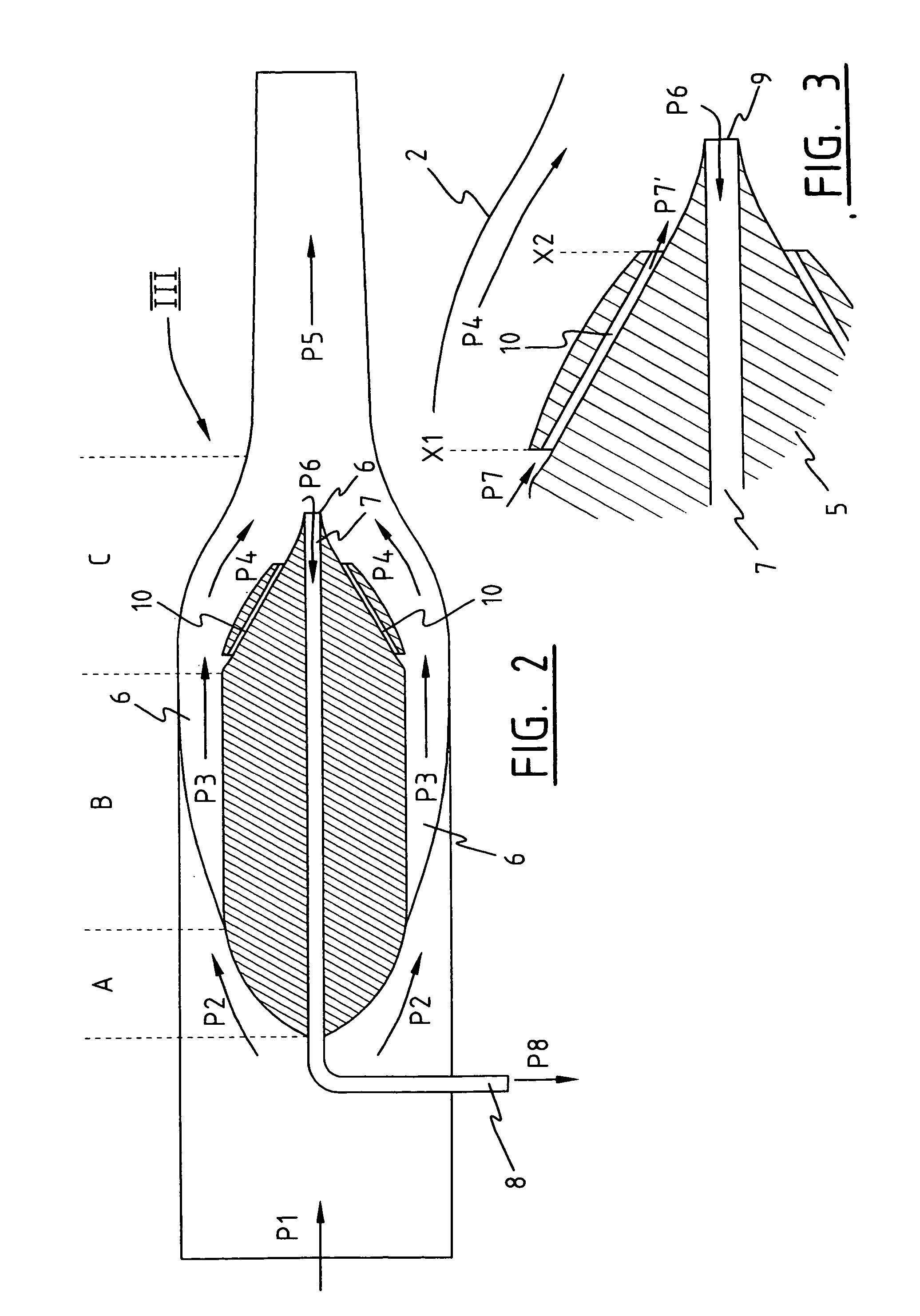Separating cyclone and method for separating a mixture
a technology of mixture and cyclone, which is applied in the direction of vortex flow apparatus, liquid degasification, separation process, etc., can solve the problems of limited separation efficiency, and achieve the effects of improving separation efficiency, improving separation efficiency, and increasing throughpu
- Summary
- Abstract
- Description
- Claims
- Application Information
AI Technical Summary
Benefits of technology
Problems solved by technology
Method used
Image
Examples
Embodiment Construction
[0039]Referring to FIGS. 1–3, a first preferred embodiment of a cyclone separator is shown. A mixture is supplied of two or more liquids of different density. A relatively heavy liquid (also referred to hereinbelow as the heavy fraction), such as water, is mixed with a relatively light liquid, such as oil. It is however equally possible to separate a mixture of gases or a gas / liquid mixture.
[0040]Separating cyclone 1 has for its object to separate the supplied mixture into a part containing substantially the heavy liquid (also referred to hereinbelow as the heavy fraction), and a part containing substantially the light liquid (also referred to as the light fraction). Separating cyclone 1 is constructed from a cylindrical outer casing, inside which a flow space is defined. The outer casing comprises an initial pipe 2 which has a substantially constant diameter, a middle pipe 3, the diameter of which decreases in axial direction, and a cylindrical end pipe 4.
[0041]A flow body is arran...
PUM
| Property | Measurement | Unit |
|---|---|---|
| density | aaaaa | aaaaa |
| diameter | aaaaa | aaaaa |
| centrifugal forces | aaaaa | aaaaa |
Abstract
Description
Claims
Application Information
 Login to View More
Login to View More - R&D
- Intellectual Property
- Life Sciences
- Materials
- Tech Scout
- Unparalleled Data Quality
- Higher Quality Content
- 60% Fewer Hallucinations
Browse by: Latest US Patents, China's latest patents, Technical Efficacy Thesaurus, Application Domain, Technology Topic, Popular Technical Reports.
© 2025 PatSnap. All rights reserved.Legal|Privacy policy|Modern Slavery Act Transparency Statement|Sitemap|About US| Contact US: help@patsnap.com



